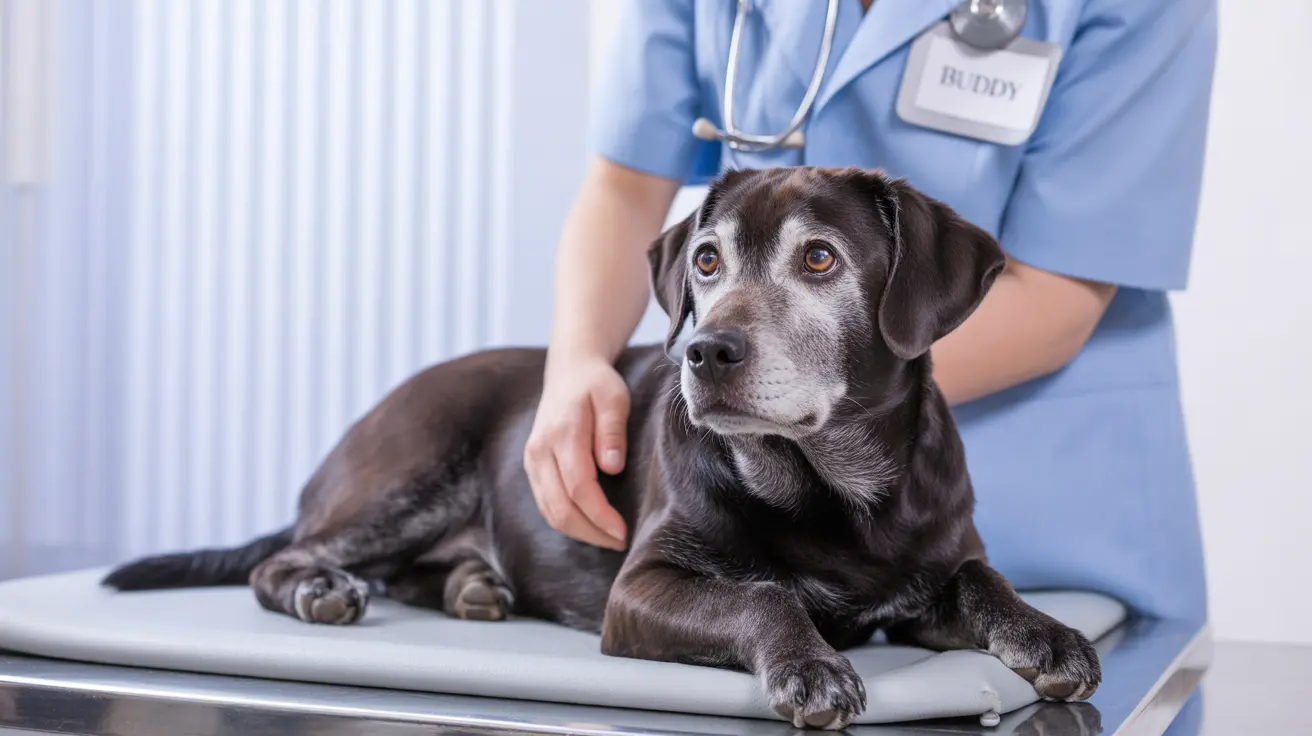Types of Dwarfism in Labradors
There are primarily two types of skeletal dysplasia that cause dwarfism in Labradors:
Skeletal Dysplasia 2 (SD2)
This is the more common and milder form of dwarfism in Labradors. It's characterized by shorter legs while maintaining relatively normal body proportions and health. SD2 is caused by a specific mutation in the COL11A2 gene and follows an autosomal recessive inheritance pattern.
Skeletal Dysplasia 1 (SD1)
This more severe form of dwarfism causes obvious limb deformities, including bowed legs and other skeletal abnormalities. SD1 typically results in more significant health challenges and requires more intensive management.
Genetic Factors and Inheritance
The primary form of dwarfism (SD2) in Labradors is caused by a specific mutation in the COL11A2 gene. This condition is inherited in an autosomal recessive manner, meaning a puppy must receive the mutated gene from both parents to be affected. The mutation has been found to occur in less than 1% of the Labrador population.
Clinical Signs and Diagnosis
Identifying dwarfism in Labradors involves several key indicators:
- Disproportionately shorter legs compared to body length
- Normal-sized head and body
- Possible bowing of the legs (particularly in SD1)
- Variable severity of symptoms depending on the type of dwarfism
Health Management and Care
Caring for a dwarf Labrador requires special attention to several aspects:
- Regular veterinary check-ups to monitor skeletal development
- Weight management to prevent extra stress on joints
- Appropriate exercise modification based on individual capability
- Potential physical therapy or rehabilitation as needed
Breeding Considerations
Responsible breeding practices are crucial when dealing with dwarf Labradors:
- Genetic testing before breeding to identify carriers
- Avoiding breeding two carriers together
- Understanding the implications of the condition for future generations
- Following breed-specific guidelines and ethical considerations
Frequently Asked Questions
What causes dwarfism in Labrador Retrievers and how is it inherited?
Dwarfism in Labradors is primarily caused by a genetic mutation in the COL11A2 gene (for SD2) and is inherited in an autosomal recessive manner. This means both parents must carry the gene for puppies to be affected.
How can I tell if my Labrador has dwarfism or is just naturally small?
True dwarfism involves disproportionate features, particularly shorter legs compared to body length. A veterinary examination and genetic testing can confirm the diagnosis, distinguishing it from dogs that are simply smaller in overall size.
What health problems are associated with dwarfism (SD1 and SD2) in Labradors?
SD2 typically has milder health implications, while SD1 can lead to more serious issues including joint problems, mobility challenges, and potential breathing difficulties. Regular veterinary monitoring is essential for both conditions.
Is there a genetic test to identify dwarfism in Labradors before breeding?
Yes, genetic testing is available to identify carriers of the SD2 mutation. This testing is crucial for responsible breeding programs to prevent producing affected puppies.
How should I care for and manage a Labrador with dwarfism to ensure a good quality of life?
Focus on maintaining healthy weight, providing appropriate exercise, regular veterinary check-ups, and possible physical therapy when needed. Many dwarf Labradors can live happy, active lives with proper management.
Understanding and properly managing dwarfism in Labradors is crucial for both breeders and owners. While affected dogs can lead healthy, happy lives, responsible breeding practices and appropriate care are essential for ensuring the best possible outcomes for these special dogs.






